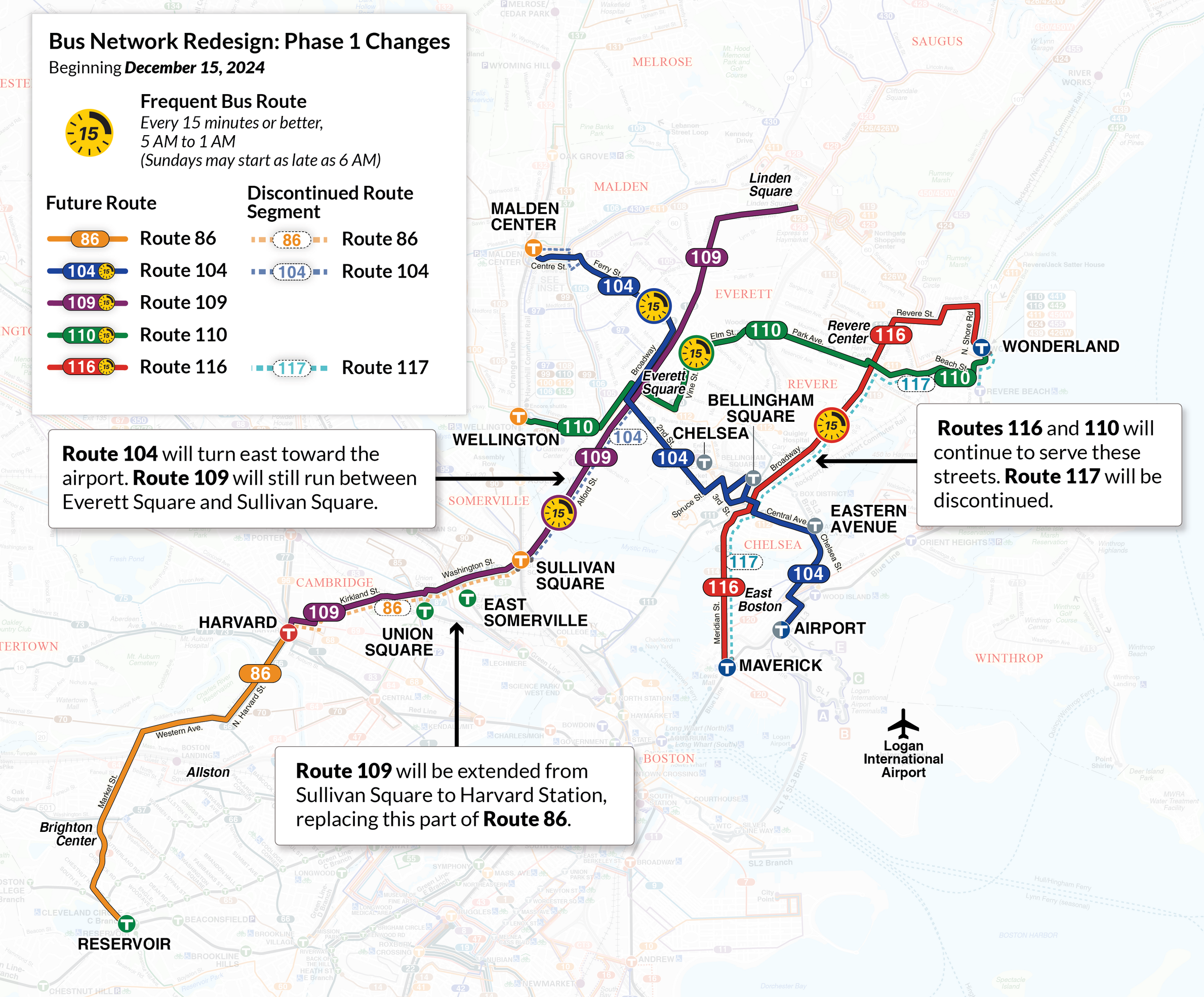Something to consider about that value is Everett and Chelsea are entirely reliant on bus service (save for Chelsea Commuter Rail). To a lesser extent Revere. The two are also absolutely tiny cities so simpler and easier to accomplish small changes to fewer routes bring a large increase in service to a very large percentage of people. Bang for your buck.
Per the StreetsblogMass article: "That leaves the T with 164 vacancies, although the agency does have 128 new bus operators actively in training programs." That's almost 80% of the budgeted vacancies accounted for (that doesn't make up for the inactive count).
There's not much that can be done about the lack of CDL drivers around and in addition, those with the correct endorsements to drive a bus. For basically ready-to-go drivers you'd need individuals who already have a CDL class A or B with passenger endorsements. That latter part is something a trucker typically wouldn't have. Those that do would have to already be or have been bus drivers somewhere and see a better opportunity for them driving in Boston but still need to go through all the specific MBTA procedures training and such. That's a rare few. The crop that the T is primarily pulling from are those that need to go through the exam and road test process to get those endorsements as well as now those without CDLs at all. That they managed to get a net 186 ready and driving in a year amongst all the departures is pretty good. It's not like hiring somebody for an office job where all they need to do is show up and can start contributing to work right away. It's a lengthy process.
The point here is that December 2024 leaves too little time to fill in the remaining vacancies, if it is this cumbersome to refill a big giant empty roster. Sure, 128 are in training, but not everyone is going to finish training (whether it be beacuse they failed, etc., etc.). Some will separate in the next few months. Some will get fired. We're at 1,571 right now, but the T needs to get to 1,725 to approximate fully staffed loads (125 of which are inactive), which when added up gives you 1,859.
After the group of 128 finish training, you may add, say 100 - 115 operators; then subtract some of the existing ones for separations, you're now down to the 1,600s range. You have over 50 vacancies with inactive positions counted to fill. Still very far from the 1,725/1,859 target.
The T's own projects put it into February 2025 before it can even approach 1,650 operators; let alone 1,725 which would equal a fully staffed enviornment. That's not gonna happen until March when extrapolating the graph. Just 4 more months of postponement of BNRD could give the T enough time to add one more class's worth of trainees to get to the full target.
7,306 service hours today compared to 8,299 pre-COVID requires 125 - 165 new operators. The current class's worth of 128 trainees are not enough to close this gap.
This ignores the fact that priority infrastructure can mean the same number of trips are provided with fewer operator hours
I don't understand why we're talking about
cutting service hours just because center running bus lanes on Columbus Ave. allows buses to complete routes in less time "allowing for lesser bodies on the road".
Literally half of the city still lacks access to the frequent network. The T has already removed 8 positions from the roster this fiscal year (1,867 -> 1,859). BNRD requires 25% more service above 8,299 service hours; and so more people are needed to run the extra service. Again, there is
no other way around the fact that the T
has to get to (1,725 active/1,859 full) to run BNRD service or pre-COVID service. No less. If you want to run BNRD on top of pre-COVID service, or one of the two, no matter what, you have to return to the pre-COVID staffing levels. You can't run 8,299 service hours with just 1,571 operators.


